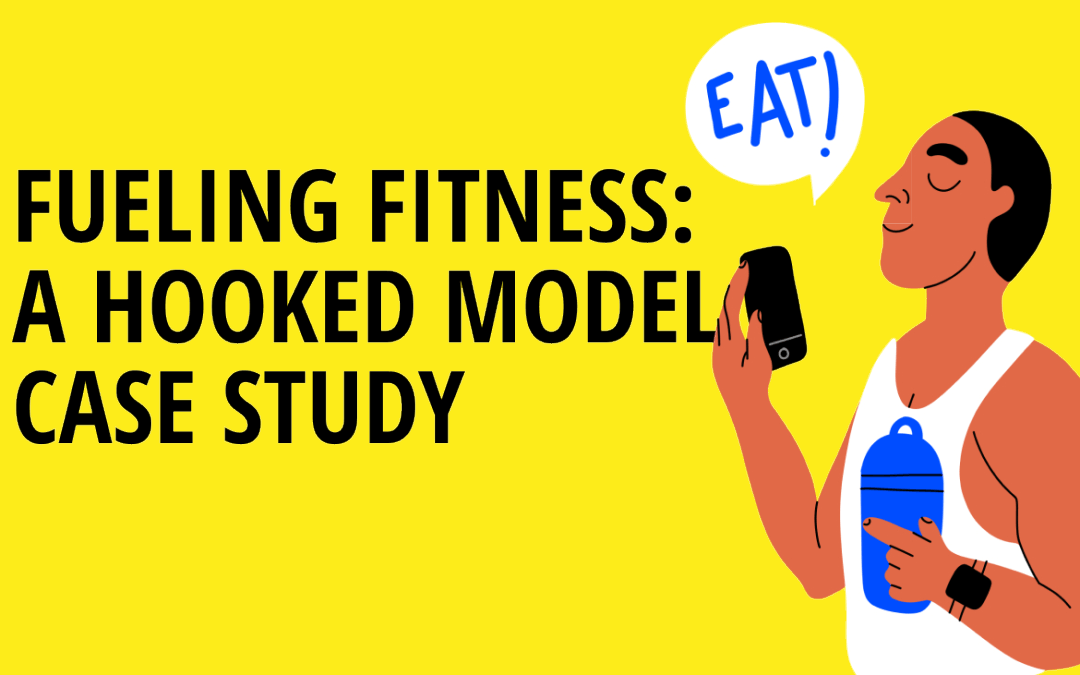As a dad with three kids, I struggle to stick with a fitness regimen. The two years of on-and-off quarantining during the COVID-19 pandemic obliterated any routines I had in place.
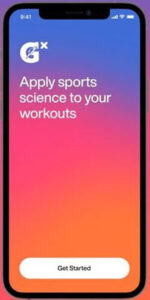
The issue is not a lack of information about what I could or should be doing. The inverse is true. There is so much information out there—some legit, some not so much—that it’s hard to know who to trust.
Analysis paralysis causes me to revert to my usual: an infrequent, slow three-mile jog after dropping the kids off at school. Unsurprisingly, this leaves me uninspired and doubtful that I’m making progress toward my goals.
When I hit the gym—a rare occasion these days—I feel rudderless, showing up without a solid game plan. How much cardio should I be doing? Treadmill, bike, or stair climber? Should I stick to working out using my body weight, or should I hit the weights? What type of stretching should I do? Should I make time for the hot tub, sauna, or steam room to help recovery?
Then there’s the question of what, when, and how much I should eat and drink to fuel my body.
You can imagine my excitement to put my behavioral design training to work by collaborating with Gatorade and Nir Eyal, behavioral designer and best-selling author of Hooked: How to Build Habit-Forming Products and Indistractable, to develop a digital design strategy for Gx App—the latest app from Gatorade that integrates multiple behavioral workouts and physiological data streams to develop custom-designed plans for fitness, nutrition, hydration, and recovery.
Through a mixed-methods approach with Egg Strategy to integrate qualitative and quantitative research, we developed behavioral insights to define athletes’ behavior patterns and aspirations: what they want to do, how they want to feel, and who they want to become. Our insights also uncovered athletes’ barriers to and mental models for sports, fitness, nutrition, recovery, and apps and explained how those barriers and mental models work.
Next, we integrated these behavioral insights into Nir Eyal’s Hooked Model. The Hooked Model articulates four steps to create “experiences designed to connect the user’s problem with the company’s product with enough frequency to form a habit.” Some of the world’s most successful brands and products owe their “stickiness” to a strong hook. Here’s how we used Nir’s model to design an engaging, effective, innovative app.
TRIGGER:
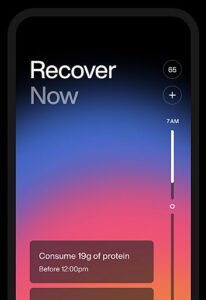 No behavior happens without a trigger. External triggers, like emails or in-app notifications, draw users to the app or experience for the first time. But to get users to return to the experience again and again, the app has to create an association with an emotional internal trigger. The goal is to attach users’ internal trigger to the product’s use.
No behavior happens without a trigger. External triggers, like emails or in-app notifications, draw users to the app or experience for the first time. But to get users to return to the experience again and again, the app has to create an association with an emotional internal trigger. The goal is to attach users’ internal trigger to the product’s use.
When it comes to a fitness regimen, users’ internal triggers are likely uncertainty and frustration. An overabundance of tracking apps, YouTube videos, and other resources leave athletes drowning in data and starving for guidance. The resulting overwhelm causes athletes to feel unconfident, unsure what to do when and concerned that they’re not on the right track to achieve their desired results.
The Gx App directly scratches this itch by sending SMS notifications to remind athletes what to do to stay on track. An association with a pre-existing internal trigger develops over time: Whenever athletes feel overwhelmed and confused about what next step to take to follow their fitness plan, they visit the Gx App for relief.
ACTION:
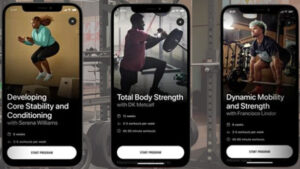
Once users are triggered, the next step is to create an action that is the simplest behavior in pursuit of a reward. Some of the most revolutionary digital experiences are surprisingly simple, like the Alexa app, which requires the user to give a simple voice command into an always-on smart speaker rather than take multiple steps in an app.
For Gx App users, the action is as simple as opening the app to receive clear direction on what to do now and what to do next—whether that means doing a specific workout, taking a rest day to recover, or making sure they’re fueling their bodies with the right hydration and nutrition to get the most out of their training.
REWARD:
Reward is the critical third step that fulfills the user’s desire, scratching the “itch” that triggered the user’s visit to the app. And creating variable rewards is a critical behavioral design feature that keeps users engaged. Our brains are problem-solving machines that revel in the search for new information. Varying rewards is a powerful way to keep the experience fresh and exciting over time.
According to Nir Eyal, there are three types of variable rewards: rewards of the tribe, rewards of the hunt, and rewards of the self. The Gx App delivers on two of the three.
Rewards of the Hunt:
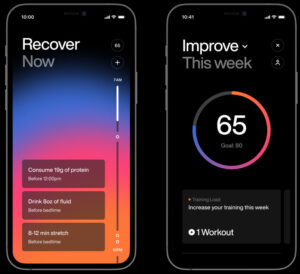 Our brains are often on the hunt—whether for food, shelter, or information. This craving for more explains why slot machines and apps’ endless scrolls are so habit-forming.
Our brains are often on the hunt—whether for food, shelter, or information. This craving for more explains why slot machines and apps’ endless scrolls are so habit-forming.
The Gx App delivers information rewards, helping users understand how they’re performing in relation to their fitness aspirations. The app’s “Gx Score”—constantly in flux based on an athlete’s behaviors—creates a sticky experience that compels athletes to regularly check their score to see how their recent workouts, nutrition, and sleep are affecting it.
Rewards of the Self:
According to self-determination theory, our motivation to work toward long-term goals, like health and wellness, is largely driven by our ability to gain mastery and confidence to feel in control. We crave confirmation that we’re improving and progressing toward our goals.
An important dimension of self-determination theory and a core tenet of motivational psychology, intrinsic motivation is the drive to engage in activities one genuinely enjoys. Encouraging people to do what they already enjoy helps grow sustainable motivation.
The Gx App gives users a sense of control and fosters intrinsic motivation by empowering them to select a “pro-inspired training program” that best aligns with their aspirations and preferred activities, like developing core stability, building total body strength, or training for a race. The Gx App then provides a training schedule as well as hydration, nutrition, and recovery recommendations designed to meet users where they are and help them achieve their goals—not goals others have set for them.
INVESTMENT:
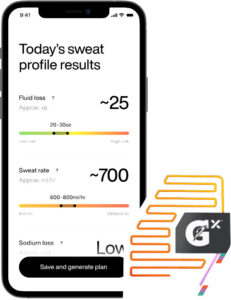 There is one final step in the Hooked Model. In the investment phase, users do a little “work” to improve the product experience over time, usually by submitting information about their behaviors and preferences: By “liking” a song on Spotify or watching programs on Netflix, for example, users are informing those platforms’ recommendations for what to watch or listen to next.
There is one final step in the Hooked Model. In the investment phase, users do a little “work” to improve the product experience over time, usually by submitting information about their behaviors and preferences: By “liking” a song on Spotify or watching programs on Netflix, for example, users are informing those platforms’ recommendations for what to watch or listen to next.
The Gx App integrates data streams from multiple fitness tracking apps like Strava, Garmin Connect, and Apple Health to create a one-stop shop for personalized fitness insight and guidance. By tracking athletes’ training load, motivation, hydration, and sleep, the Gx App modifies the training program to meet athletes where they are—making the app even more helpful over time. Athletes can wear a Gx Sweat Patch during workouts and scan it using the app to analyze their sweat rate and sodium loss during athletic activity. Gx App users can even use a Smart Gx Bottle that links to the Gx App to keep track of how much they’re drinking every day. This suite of innovative technology offerings, previously only accessible to pro athletes, helps users to personalize hydration and nutrition to improve preparation and recovery.
PUTTING IT ALL TOGETHER: THE Gx APP HOOKED MODEL
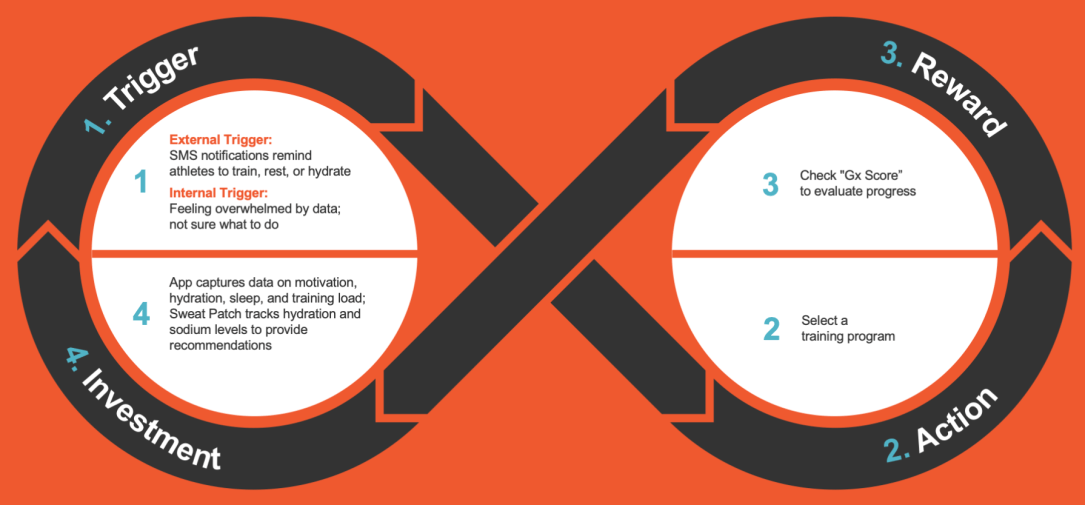
IMPACT:
Since launching, the new version of the Gx App, which integrated the Hooked Model, has seen significant improvements across a range of key performance indicators, including:
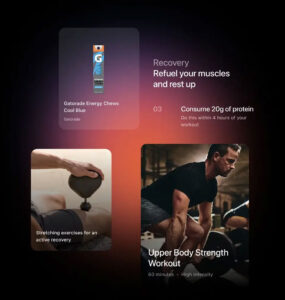
- Installs: 90% week-over-week median growth, with more than 30K installs since launch
- Daily Active Users: 3x growth since Gx App 2.0 launch
- Engagement: Roughly 20% of Gx app users are using Gx to complete three or more workouts per week—an increase of 6% to 8% from version 1.0 to 2.0.
- Weekly/Monthly Average Users: Since the launch of Gx App, 32% of users are Weekly Active Users and 68% are Monthly Active Users.
The updated version of the Gx App was named an Honoree in the “Software and Mobile App” category of the CES 2022 Innovation Awards and a finalist in the Fast Company Innovation by Design Awards.
 As Drew Palin, Senior Director of Marketing, Innovation and Digital Ecosystem for Gatorade, said, “Focusing on the user psychology before the technology helped us gain deeper understanding of our users’ aspirations, challenges, and the jobs they hire tools like our app to do. By working with Sam and Nir to apply behavioral design and the Hooked Model, we were able to create a next-level user experience that actively engages users to achieve their fitness and performance goals at the intersection of training, nutrition, and recovery.”
As Drew Palin, Senior Director of Marketing, Innovation and Digital Ecosystem for Gatorade, said, “Focusing on the user psychology before the technology helped us gain deeper understanding of our users’ aspirations, challenges, and the jobs they hire tools like our app to do. By working with Sam and Nir to apply behavioral design and the Hooked Model, we were able to create a next-level user experience that actively engages users to achieve their fitness and performance goals at the intersection of training, nutrition, and recovery.”
Related Articles
- Schedule Maker: a Google Sheet to Plan Your Week
- Cancel the New York Times? Good Luck Battling “Dark Patterns”
- How to Start a Career in Behavioral Design
- A Free Course on User Behavior
- User Investment: Make Your Users Do the Work
- Variable Rewards: Want To Hook Users? Drive Them Crazy
- The Hooked Model: How to Manufacture Desire in 4 Steps
